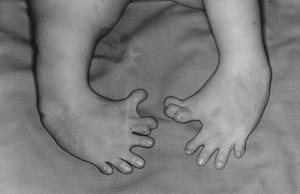The question comes up when a pregnant woman has a serious medical condition: should she or shouldn’t she be treated? Are the indicated drugs safe for the baby?
Drugs are assigned pregnancy risk classes. Thalidomide, whose reputation for causing fetal malformations was chillingly established in the 1960s, is solidly in Class X (the most risky), as are the cholesterol-lowering drug lovastatin and the anti-coagulant warfarin. At the other extreme are Class A drugs that are widely recognized as safe in pregnancy.
But between these extremes is a huge group of drugs for which little is known. These middle groups are designated B, C and D, with increasing levels of supposed risk to the fetus. But the evidence is fairly scant, coming mainly from animal studies that may or may not apply to humans, and from the observations of clinicians astute enough to suspect a pattern and note a case in the record.
“Even some drugs in Class A may cause subtle defects that we haven’t detected,” says Asher Schachter, of the Children’s Hospital Informatics Program (CHIP).
Asher and co-investigator Isaac Kohane just published a bioinformatics analysis that provides a faint beacon to guide women and their doctors. The two crunched public databases to profile 619 drugs already assigned to a pregnancy risk class, and whose target genes or proteins are known. They then did a text search to learn which of these genes (numbering 7426 in all) are involved in biological processes related to fetal development — using search terms like “genesis,” “develop,” “differentiate” and “growth.”
The drugs whose target genes had the most “hits” on this search tended to be in the higher risk classes. From this encouraging information, Schachter and Kohane constructed a gene-based model that showed 79 percent accuracy in predicting whether a drug would be in Class A or Class X.
The model needs further validation before researchers take predictions for specific drugs directly to the public. But in the meantime, they think drug developers and prescribing physicians would be highly interested.
Drug labeling could incorporate information from the model, as in, “This drug targets a moderate proportions of developmental genes, suggesting it may be unsafe in pregnancy” or “This drug targets no known developmental genes, suggesting it is likely to be safe in pregnancy.”
Women and their physicians could then balance this information against the risk to the baby of not treating their condition. But at least they won’t be flying quite as blind.







